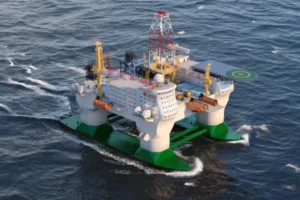The Indian Space Research Organisation (ISRO) achieved a significant milestone by successfully launching the Space Docking Experiment (SpaDeX) mission on December 30, 2024. The mission represents a critical step in advancing India’s space exploration capabilities, particularly in spacecraft docking technology.
The PSLV-C60 rocket lifted off from the Satish Dhawan Space Centre in Sriharikota at 9:58 p.m., carrying two small satellites—SDX01 (Chaser) and SDX02 (Target)—along with 24 other payloads.
Mission Details
The PSLV-C60 placed the two satellites, each weighing approximately 220 kg, into a 475-km circular orbit at a 55-degree inclination. About 15 minutes post-liftoff, SDX02 separated first, followed by SDX01, as planned.
ISRO Chairman S. Somanath confirmed the successful deployment, stating, “The rocket has placed the satellites in the right orbit. The spacecraft’s solar panels have been deployed successfully. The two SpaDeX satellites have moved one behind the other. Over the next few days, they will build a distance of about 20 km, setting the stage for the rendezvous and docking process, which is expected to occur around January 7, 2025.”
Significance of SpaDeX
SpaDeX is designed to demonstrate crucial technologies required for spacecraft rendezvous, docking, and undocking. These capabilities are vital for future missions, including sending astronauts to the moon, building and operating a space station, and conducting satellite servicing.
The mission aims to showcase ISRO’s ability to:
Introduce precise relative velocities between spacecraft.
Execute controlled propulsion maneuvers for orbital adjustments.
Achieve far rendezvous and docking in low Earth orbit.
At the end of the drift arrest maneuver, the Target and Chaser will be in the same orbit with identical velocities but separated by 20 km. The Chaser will then approach the Target, reducing the inter-satellite distance progressively until docking is achieved.
Technological Demonstrations
ISRO emphasized that SpaDeX serves as a precursor to ambitious projects like the Bharatiya Antariksh Station (BAS) and interplanetary missions such as Chandrayaan-4. The technologies being tested include:
Incremental Velocity Adjustments: The PSLV-C60 demonstrated its precision by introducing a small relative velocity between the satellites, enabling controlled separation and alignment.
Docking and Undocking Mechanisms: The rigid mechanical connection between the satellites will also facilitate power transfer tests.
Following docking, the satellites will undock and conduct independent operations, including utilizing the Chaser’s high-resolution camera and the Target’s multispectral payload and radiation monitor.
POEM-4 Payloads
In addition to the SpaDeX mission, the fourth stage of the PSLV-C60 rocket, called the PSLV Orbital Experimental Module (POEM-4), carries 24 payloads contributed by ISRO centers, academia, and private companies. Key experiments include:
Walking Robotic Arm: Developed by ISRO Inertial Systems Unit (IISU), this robotic manipulator uses an inchworm walking technique.
Debris Capture Robotic Manipulator: A proof-of-concept device designed to capture space debris.
Biological Experiments: Studies on plant growth and bacterial physiology in microgravity, conducted by Amity University and R.V. College of Engineering.
Synthetic Aperture Radar (SAR) Payloads: Demonstrations by GalaxEye Space and Piersight Space aim to capture high-resolution ground images.
Green Propulsion Systems: Innovations like Bellatrix Aerospace’s RUDRA 1.0 HPGP and Manastu Space’s VYOM 2U aim to test safer and efficient propulsion technologies.
A Year of Achievements for ISRO
The SpaDeX mission concludes an eventful year for ISRO, which included the PSLV-C59 mission for ESA’s Proba-3 spacecraft and preparations for the Gaganyaan human spaceflight program. ISRO began assembling the human-rated LVM-3 (HLVM-3) rocket on December 18, 2024, marking the start of its uncrewed mission campaign.
Future Outlook
The technologies demonstrated in SpaDeX will be instrumental as India looks forward to pivotal missions in 2025, such as the first uncrewed Gaganyaan mission and collaboration with NASA on the NASA-ISRO SAR (NISAR) mission.
India’s spaceflight ambitions continue to soar, setting the stage for a defining era in the country’s space exploration journey.







